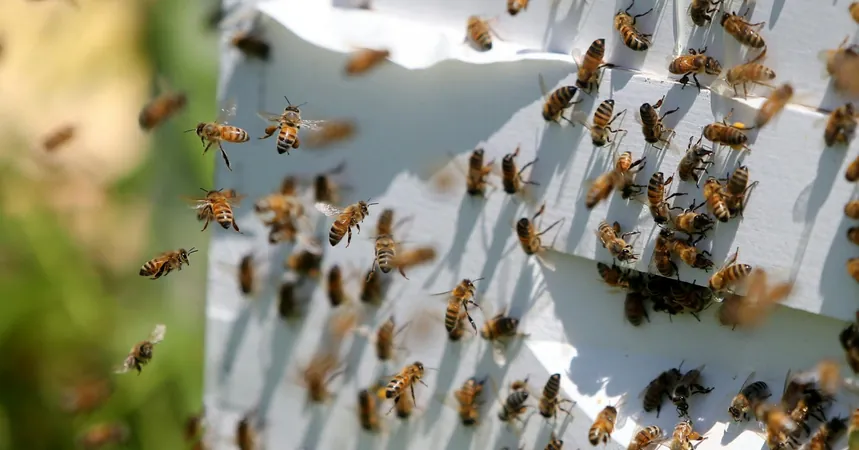
Mysterious Disappearance of Minnesota Honeybees: Are Mites and the Weather to Blame?
2024-11-21
Author: Ken Lee
Introduction
In an unexpected turn of events, Minnesota beekeeper Kirk Nelson recently discovered that one of his honeybee colonies had vanished overnight from his backyard in Orono, leaving behind nothing but honey. For Nelson, who has been tending to these bees for six years, the abrupt loss came as a shocking surprise, especially after he had checked on the hive just two weeks prior and observed everything to be thriving.
Widespread Disappearances
Nelson is not alone in facing this troubling scenario. Reports are surfacing from multiple local beekeepers who have experienced similar disappearances, with bees leaving their hives in droves.
The Culprit: Varroa Mites
According to Marla Spivak, a prominent entomology professor at the University of Minnesota's Bee Lab, the culprit behind this bizarre phenomenon is likely the Varroa mite. These notorious parasites infest nearly every beehive across America, feasting on the blood of bees while transmitting harmful viruses. Spivak noted that during late fall, when viral loads can peak, bees may flee the hive just before succumbing to illness.
Threats to Bee Health
Beekeepers have long considered Varroa mites to be one of the most significant threats to bee health, a fact confirmed by surveys conducted by the Bee Lab. Nelson had taken measures to treat his hives for these pests in September, yet the warm autumn temperatures have created an environment where queen bees continue to lay eggs well into the season, inadvertently exacerbating mite populations. This overlap between brood production and mite reproduction can lead to unnoticed infestations if beekeepers do not regularly inspect their hives.
Need for Data on Hive Disappearances
"Unfortunately, we lack comprehensive data on how widespread this issue really is, as Minnesota does not have a registered beekeeper tracking program," Spivak remarked. Despite this gap in information, the University of Minnesota's Bee Lab provides resources, including classes for beekeepers, who can seek guidance at their email [email protected].
Differences from Colony Collapse Disorder
It's essential to clarify that this situation does not equate to the infamous "colony collapse disorder" first identified in 2006, where hives mysteriously disappeared but left their queens behind. Unlike those summer incidents, current cases of hive disappearances typically occur in the fall. Scientists are still working to unravel the unresolved mysteries of colony collapse disorder, while it is estimated that 30% to 40% of honeybee colonies in the U.S. perish each winter, primarily due to mites and associated viruses.
Surge in Honeybee Colonies
Interestingly, recent reports from the Washington Post have highlighted a surge in the number of American honeybee colonies, which reached approximately 3.8 million hives in 2022, as stated by the USDA. However, a significant portion of this growth has been attributed to initiatives in Texas, where new tax regulations incentivize beekeeping on agricultural land.
Looking Ahead
Despite the current challenges, Nelson and his niece remain committed to their beekeeping venture. With their other hive still thriving and feasting on the remaining honey, they plan to rebound by starting a new hive come spring. As the situation unfolds, many beekeepers are left to wonder: what other hidden crises might strike our beloved pollinators in the future? Stay tuned for updates!



 Brasil (PT)
Brasil (PT)
 Canada (EN)
Canada (EN)
 Chile (ES)
Chile (ES)
 España (ES)
España (ES)
 France (FR)
France (FR)
 Hong Kong (EN)
Hong Kong (EN)
 Italia (IT)
Italia (IT)
 日本 (JA)
日本 (JA)
 Magyarország (HU)
Magyarország (HU)
 Norge (NO)
Norge (NO)
 Polska (PL)
Polska (PL)
 Schweiz (DE)
Schweiz (DE)
 Singapore (EN)
Singapore (EN)
 Sverige (SV)
Sverige (SV)
 Suomi (FI)
Suomi (FI)
 Türkiye (TR)
Türkiye (TR)